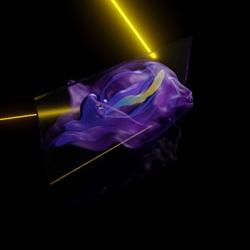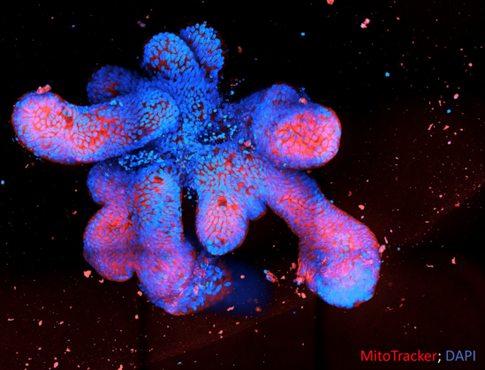This Master's Degree programme, the MPhil in Biological Science (Stem Cell Biology), will be carried out under the supervision of a Principal Investigator from within the Cambridge Stem Cell Institute, and based in their research group.
Please find potential PI projects for 2025-2026 listed below.
Join the Boroviak Group for a project in 'Functional interrogation of human gastrulation in bioprinted embryo models'.
(Available as an MPhil or PhD project)
Keywords: Human embryogenesis, bioprinting, embryo patterning, human development.
Project Overview
How do complex body patterns emerge in the early embryo? The first signs of the human body axis can be traced back to the second week of gestation. To get to this point, the fertilised egg has implanted and established a small sheet of cells, the embryonic disc. Deeply embedded within extraembryonic tissues, gastrulation transforms the EmDisc into three germ layers and organizes the body plan. All of these events are essential for healthy embryo development, but in human they have been notoriously hard to study for ethical and technical reasons.
In mouse, visceral endoderm forms a dynamic signalling centre, the anterior visceral endoderm (AVE), which plays an important role for gastrulation. Soluble inhibitors from the AVE restrict gastrulation towards the opposite side of the embryo, where a combination of WNT-, BMP- and NODAL-signalling induces primitive streak formation. In contrast to the established role of the rodent AVE, the function of the primate AVE in gastrulation is entirely unknown.
Our lab revealed the signalling landscape between implantation and gastrulation of primate embryos in vivo (Bergmann et al., Nature 2022). In this project, we will emulate human gastrulation by printing AVE-like cells onto micropatterned pluripotent stem cells. Primitive streak formation in bioprinted gastruloids will be analysed by 4-colour immunofluorescence confocal image reconstruction and single-cell transcriptome profiling for direct comparison to human and non-human primate embryo gastrula stages. In a second step, we will use knockout and reporter cell lines to pinpoint the individual effects of AVE candidate regulators to devise a conceptional framework for human gastrulation.
Stem-cell-based embryo models elucidating the crosstalk between embryonic and extraembryonic tissues will be critical to understand human implantation failure and how errors in gastrulation can lead to congenital malformations. Ultimately, this research holds the transformative potential to establish patient-specific organogenesis in a dish.
References
- Bergmann S, Penfold CA, Slatery E, Siriwardena D, Drummer C, Clark S, Strawbridge SE, Kishimoto K, Vickers A, Tewary M, Kohler TN, Hollfelder F, Reik W, Sasaki E, Behr R, Boroviak TE. Spatial profiling of early primate gastrulation in utero. Nature, 2022.
- Connor R. and Boroviak T, Origin and function of the yolk sac in primate embryogenesis, Nature Communications, 2020.
- Munger C, Kohler TN, Slatery E, Ellermann AL, Bergmann S, Penfold CA, Ampartzidis I, Chen Y, Hollfelder F, Boroviak TE. Microgel culture and spatial identity mapping elucidate the signaling requirements for primate epiblast and amnion formation. Development, 2022.
Main Techniques
- Pluripotent stem cell culture,
- Extraembryonic stem cell culture,
- Stem cell based embryo models,
- Single-cell transcriptome and multiomics profiling,
- 4-colour confocal imaging and virtual reconstruction,
- Micropattern generation and culture,
- Bioprinting and microfluidics ,
- Computational analysis of spatial RNA-seq data in the non-human primate embryos
Fictional representation of our spatial embryo profiling technique. Image credit: Erin Slatery and Thorsten E. Boroviak
Join the Zilbauer Group for a project in 'Using human organoids to unravel epigenetic mechanisms in health and Inflammatory Bowel Diseases'.
(Available as an MPhil or PhD project)
Keywords: Epigenetics.
Project Overview
The intestinal epithelium provides a critical barrier that contributes towards the establishment of a finely tuned homeostasis in the human gut. Development of a fully functioning intestinal epithelium requires the complex interaction with the environment, mediated through epigenetic mechanisms such as DNA methylation. This project investigates the impact of environmental factors on early epigenetic programming in the human intestinal epithelium and the implications to Inflammatory Bowel Disease pathogenesis.
Main Techniques
The project will utilise human mucosa derived intestinal epithelial organoids (derived from human fetal gut as well as healthy and diseased mucosal biopsies). Organoids will be subjected to gene editing, co-culture and genome wide molecular profiling (including epigenetic profiling and single cell RNA sequencing).
Image credit: Tom Dennison (former PhD student Zilbauer Lab)



